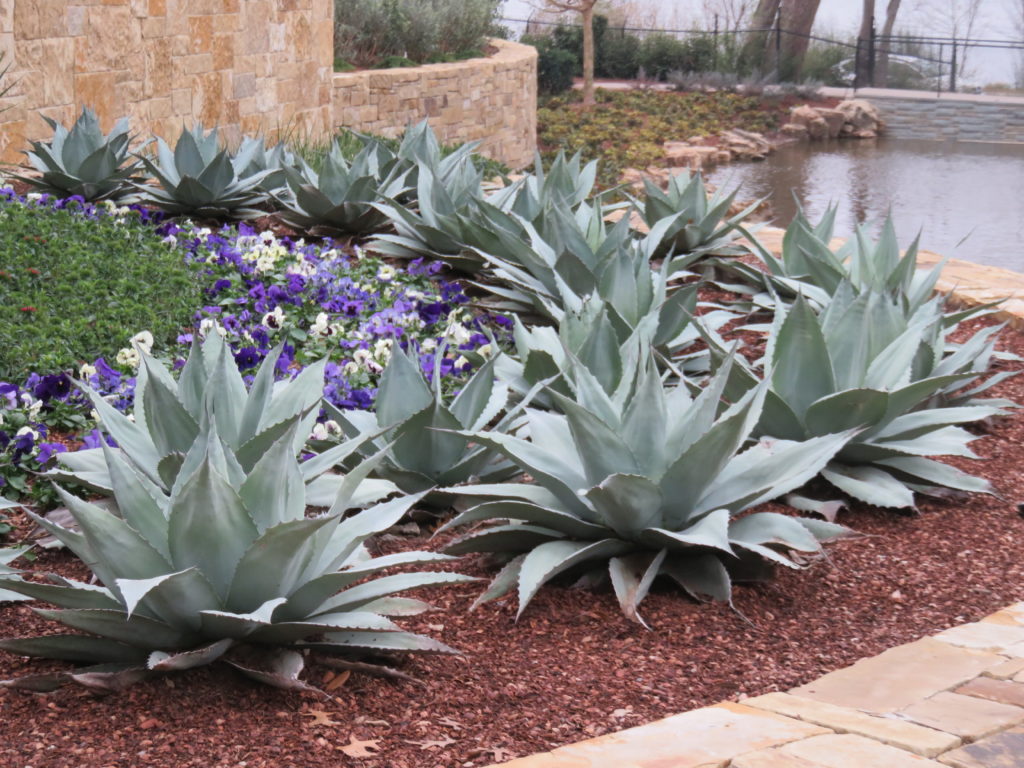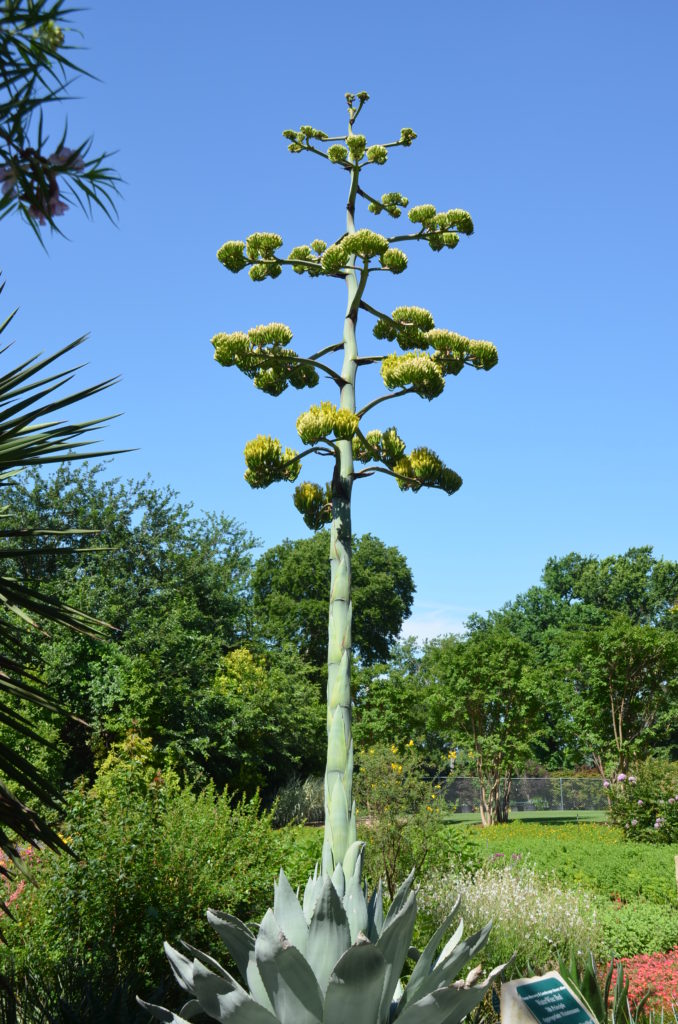Whale’s Tongue Agave

Over the past 10-15 years, interest in growing agaves has really caught fire, whale’s tongue agave (Agave ovatifolia) in particular. It grows to 3 to 4 feet tall and 4 to 6 feet wide in 5 to 8 years, especially with summer water. Like many agaves, whale’s tongue blooms after 15-20 years, and the main crown dies after blooming.
Whale’s tongue agave has distinguishing blue leaves, arranged in a spiral rosette. Leaves are cupped and can vary from long and narrow (24 inches x 8 inches) to short and broad (18 inches x 10 inches). The grand undulating leaves are lined with dark brown curved teeth measuring one-quarter to one-half inch in depth and end in a terminal 1- to 2-inch spine.
Whale’s tongue blooms only once. Sometime between 10 to 20 years, Whales’s tongue ends its life with a spectacular floral show. A multi-branched flower stalk arises 10 to 15 feet high with densely clustered chartreuse flowers. The resulting seed pods develop and mature before frost. Thereafter, the entire plant dies. Unlike most agaves, whale’s tongue does not produce offsets (pups).

Site selection is highly important. Agaves are exceptionally drought tolerant and suitable for xeric gardens. Whale’s tongue agave looks awesome in mass plantings. Agaves possess a large tap root and do not transplant well. The majority of the roots are surface roots and do not require a deep hole at planting.
Never overwater agaves! In fact, agaves perform best in high porosity soil. Agaves are highly drought tolerant and soil drainage, either in the ground or a container. They grow happily in soil with average to low fertility and in full sun to dappled shade. In a ground bed plant on a slope in soil generously amend to soil with crushed gravel, gritty sand or chit.
Agave hardiness is the most important concern (USDA hardiness zones 7-11) and in a protected area of zone 6b. When planting in clay soils, deeply amend bed or container soil with coarse sand or pea gravel in a 50:50 ratio. In early spring apply a slow-release fertilizer.
Two clones are available from tissue culture: ‘Frosty Blue’ (gray to powdery blue leaves) and ‘Vanzie’ (soft blue-gray leaves). Seed produced agaves vary in plant color, shape and size.
Caveats: keep plant(s) away from heavily trafficked areas. Agaves have dangerously sharp vicious spines; humans and pets need to be kept apart. Agaves attract birds, hummingbirds, and are deer resistant.

 Posted in
Posted in 
